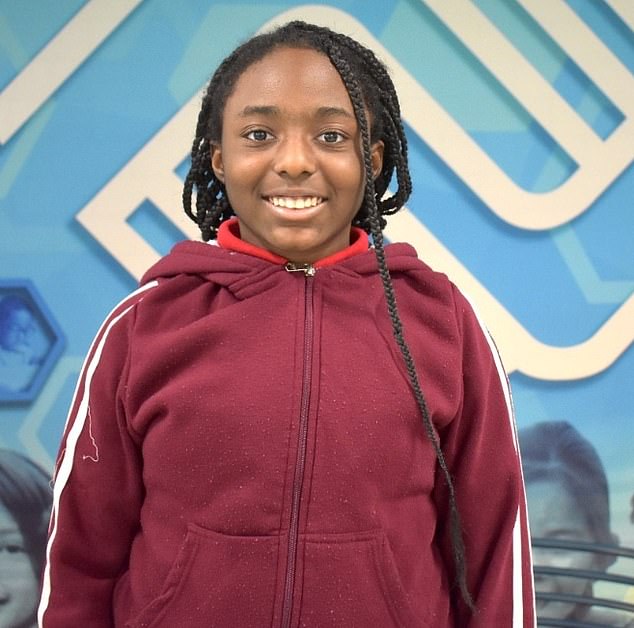A middle-schooler from Chicago discovered a cancer-fighting compound in an unlikely source.
Camarria Williams, 13, stumbled upon some goose poop in a neighborhood park and eagerly scooped it up to analyze at the Chicago Antibiotic Discovery Lab, a STEM outreach program.
An eighth-grade student at the William H. Brown STEM Magnet School in Chicago, she was recruited to the 14-week project that partnered with the Boys & Girls Club.
Miss Williams and her mentors were looking for antibiotics from natural sources and the students were tasked with collecting samples and bringing them to the lab, where the team would analyze them under a microscope.
Then, they would be analyzed by a robot the group had programmed to catalog and track samples for antibiotic capabilities.
The droppings Miss Williams collected contained the Pseudomonas idahoensis bacterium, but that wasn’t the standout finding. The team discovered the bacterium produced a never-before-seen compound called orfamide N that, under the microscope, was toxic to skin and ovarian cancer cells.
Although the discovery does not immediately lead to a cure for different types of cancer, researchers say it gives them a deeper understanding of how cancer works, which in turn helps scientists create better drugs.
Miss Williams said: ‘My mom, auntie and grandma have all had cancer, so it makes me happy that something I found could help. It makes me want to discover more things out there.’

The droppings that Camarria Williams (13) collected contained a novel compound that scientists found was toxic to human melanoma and ovarian cancer cells
The compound that Miss Williams discovered did not have antibacterial properties, but scientists at the University of Illinois Chicago found it slowed the growth of human skin cancer and ovarian cancer cells.
She told the Washington Post: ‘I did something, and it worked. It feels good.
‘It was a lot of fun to be able to go out, put on the gloves and do the science myself.’
Now, she’s a published scientist. The summary of the team’s findings appeared in the American Chemical Society’s Omega Journal in October, in which Miss Williams was named a co-author.
‘Now people will know me. They’ll know that I am a smart kid and I’m curious, Miss Williams added.
She was first attracted to the program’s rare hands-on opportunities for local STEM students.
She told the Chicago Tribune: ‘We walked around and they had these chemicals, and they were working on something. It was just fun.
‘I just want to go out and find stuff and see what it can do.’
Dr Brian Murphy, a pharmaceutical sciences researcher at the University of Illinois Chicago, runs the program to inspire a new generation of scientists.
During the pandemic, Dr Murphy’s lab teamed up with the university’s Institute for Tuberculosis Research to purchase a $200,000 robot that could be programmed to pick up certain bacteria and transfer them to new examination plates for testing against pathogens.

Ms Williams was drawn to the program for its unique hands-on experiences for local STEM students. She discovered the poop as part of an after-school program with the Boys & Girls Club in partnership with the University of Illinois Chicago
The students programmed the robot to do this all while quarantined at home.
After the research program, students were taught to use the robot’s findings to analyze and understand information gleaned from their biological research to determine which ones had useful antibiotic properties.
Jin Yi Tan, a fourth-year doctoral student in Dr Murphy’s lab, said: ‘For Camarria, she prioritized the bacteria with antibiotic properties.
‘So I followed up on the strains that she prioritized, which is where in the lab I would grow it up and purify the compounds and then do some further testing. And that’s where we found this new compound that had some cytotoxic activity against cancer cell lines.’
Dr Murphy said Miss Williams’ exciting finding is proof of the importance of accessible STEM programs for young people aspiring to be scientists.
He said: ‘What we’re really trying to do is show young students that there are a lot of real-world applications of science. We want to light a spark inside of them, get them to care about their education, and maybe even be the launching point for the next generation of biomedical researchers.’
Ms Williams, for her part, has already made her decision.
‘I want to be a scientist,’ she said.
This article was originally published by a www.dailymail.co.uk . Read the Original article here. .


